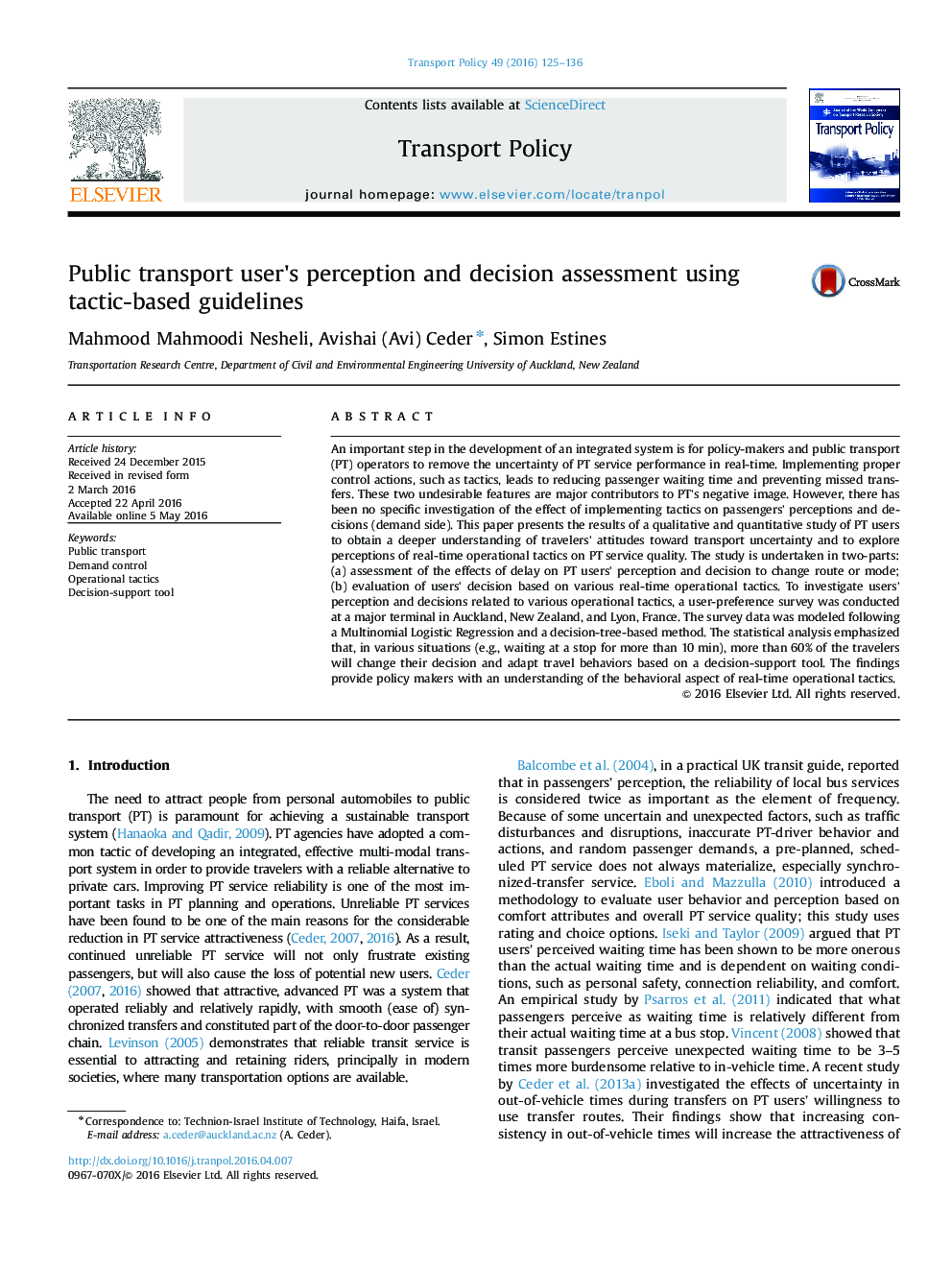| Article ID | Journal | Published Year | Pages | File Type |
|---|---|---|---|---|
| 1064779 | Transport Policy | 2016 | 12 Pages |
•Effect of operational tactics on public-transport (PT) passengers’ decisions.•Obtaining a deeper understanding of PT travelers’ attitudes toward uncertainty.•User-preference survey in Auckland, New Zealand, and Lyon, France.•Multinomial Logistic Regression and decision-tree-based methods.•More than 60% of the travelers will change their decisions because of tactics.
An important step in the development of an integrated system is for policy-makers and public transport (PT) operators to remove the uncertainty of PT service performance in real-time. Implementing proper control actions, such as tactics, leads to reducing passenger waiting time and preventing missed transfers. These two undesirable features are major contributors to PT’s negative image. However, there has been no specific investigation of the effect of implementing tactics on passengers’ perceptions and decisions (demand side). This paper presents the results of a qualitative and quantitative study of PT users to obtain a deeper understanding of travelers’ attitudes toward transport uncertainty and to explore perceptions of real-time operational tactics on PT service quality. The study is undertaken in two-parts: (a) assessment of the effects of delay on PT users’ perception and decision to change route or mode; (b) evaluation of users’ decision based on various real-time operational tactics. To investigate users’ perception and decisions related to various operational tactics, a user-preference survey was conducted at a major terminal in Auckland, New Zealand, and Lyon, France. The survey data was modeled following a Multinomial Logistic Regression and a decision-tree-based method. The statistical analysis emphasized that, in various situations (e.g., waiting at a stop for more than 10 min), more than 60% of the travelers will change their decision and adapt travel behaviors based on a decision-support tool. The findings provide policy makers with an understanding of the behavioral aspect of real-time operational tactics.
